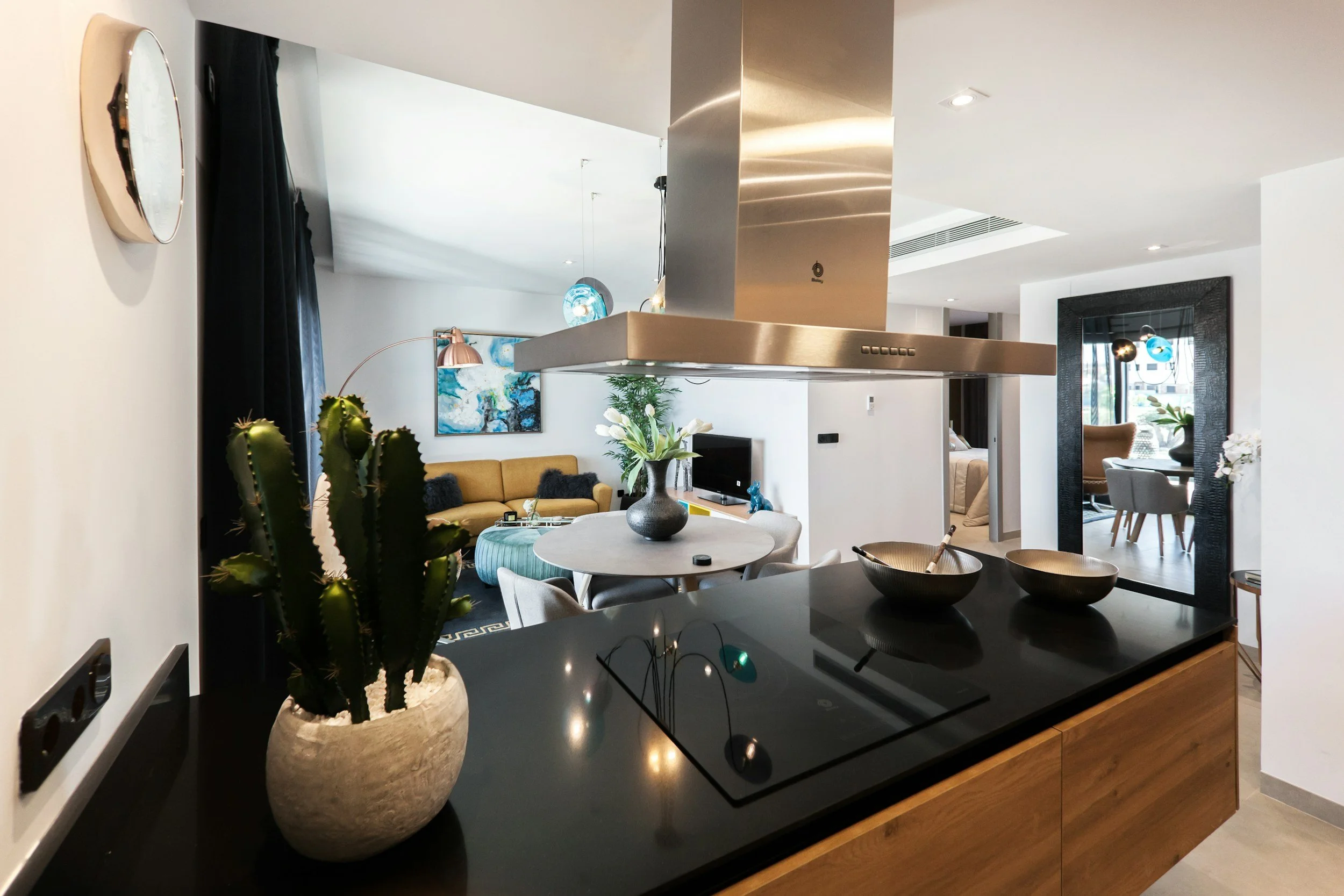Laminate, Thermofoil, Melamine Kitchen Cabinets: A Comparative Guide
Choosing the right kitchen cabinets is a crucial step in any renovation, as cabinets define your kitchen's look and functionality. If you're working within a budget but still want stylish and durable cabinetry, laminate, thermofoil, and melamine are three popular options. While they may appear similar at first glance, each material has unique characteristics that can impact your decision.
Here's an in-depth look at the differences to help you choose the best option for your home.
Laminate Kitchen Cabinets
Construction: Laminate cabinets consist of a substrate—such as particleboard or MDF (medium-density fiberboard)—covered with a decorative laminate sheet. This sheet is made by layering kraft paper and resin under high heat and pressure, resulting in a hard, durable finish.
Appearance: Laminate offers a wide range of colours, patterns, and finishes. From natural-looking wood grains to bold, solid hues and even metallics, laminate can mimic the appearance of premium materials like real wood or stone at a fraction of the cost.
Pros:
Durable and long-lasting: Laminate resists scratches, stains, and heat, making it ideal for busy kitchens.
Easy to clean: A simple wipe with a damp cloth is usually all that is needed to maintain laminate cabinets.
Affordable: Generally more budget-friendly than real wood cabinets.
Versatile: Available in various styles, finishes, and colours.
Cons:
Susceptible to chipping: Although durable, laminate can chip or crack if subjected to heavy impacts.
Aesthetic limitations: While high-quality laminate can look luxurious, some finishes may still lack the warmth and depth of natural wood.
Best For: Homeowners who want a durable, cost-effective solution with plenty of design options. Laminate is particularly well-suited for modern, minimalist, or eclectic kitchens.
Learn more about the pros and cons of laminate from The Spruce's countertop and cabinet guide.
Thermofoil Kitchen Cabinets
Construction: Thermofoil cabinets are made by heat-fusing a thin vinyl film onto an MDF substrate. The high-pressure process creates a seamless, durable finish that adheres tightly to the cabinet surface, resulting in smooth, polished panels without visible seams.
Appearance: Thermofoil is known for its high-gloss, reflective surfaces that give kitchens a sleek and modern look. It's available in various finishes, including high-gloss, matte, and even textured options that mimic natural materials.
Pros:
Durable and scratch-resistant: The vinyl coating protects against daily wear and tear.
Moisture-resistant: Thermofoil is ideal for high-humidity areas like kitchens and bathrooms.
Easy to clean: A quick wipe-down with a damp cloth keeps the surface clean.
Seamless, modern finish: Thermofoil's smooth surface offers a high-end, modern aesthetic.
Cons:
Limited customization: Thermofoil may not offer the same variety of patterns and textures as laminate.
Heat sensitivity: Prolonged exposure to heat from nearby appliances can cause the vinyl film to peel or warp.
Difficult to repair: Repairs can be costly and challenging if the surface becomes damaged.
Best For: Homeowners looking for a modern, minimalist kitchen with glossy or matte surfaces and low-maintenance durability. Thermofoil cabinets are an excellent choice for kitchens that don't experience extreme heat near stovetops or ovens.
Check out Remodelista's kitchen cabinet guide for additional details on this material.
Melamine Kitchen Cabinets
Construction: Melamine cabinets consist of a decorative layer of melamine resin (thermosetting plastic) fused onto a substrate, typically particleboard or MDF. This fusion process creates a hard, durable surface that resists common kitchen wear and tear.
Appearance: Melamine is available in various colours, finishes, and patterns, including realistic wood grains and solid hues. While not as customizable as laminate, melamine offers plenty of design flexibility at a budget-friendly price.
Pros:
Very affordable: One of the most cost-effective cabinet options available.
Durable and easy to clean: Resistant to scratches, moisture, and stains.
Design flexibility: Available in various patterns and textures that suit modern and traditional kitchen styles.
Cons:
Prone to chipping: Melamine can chip or crack at the edges if handled roughly or exposed to heavy impacts.
Plastic-like finish: While some high-quality melamine can look convincing, others may have a shinier, synthetic appearance.
Less heat-resistant: Melamine may not hold up well in areas with direct heat exposure.
Best For: Budget-conscious homeowners who want durable, easy-to-maintain cabinets in various colours and finishes. Melamine is an excellent choice for rental properties or secondary kitchens, like those in basements or offices.
Explore melamine cabinet trends and inspiration on Real Simple's kitchen guide.
Which Option Is Right for You?
When deciding between laminate, thermofoil, and melamine cabinets, consider your lifestyle, design preferences, and maintenance habits. Here's a quick summary to guide you:
Choose laminate if You want a durable, affordable option with a wide range of design choices, including textures and finishes that mimic real wood and stone.
Choose thermofoil if You love the sleek, seamless look of glossy, modern cabinets and want a low-maintenance surface that resists moisture and scratches.
Choose melamine if You're looking for an affordable, functional solution that resists daily wear and tear but may have fewer customization options.
Final Thoughts
Kitchen cabinets play a crucial role in your kitchen's appearance and usability. Understanding the key differences between laminate, thermofoil, and melamine can help you make a more informed decision based on your budget and design vision.
Remember that each material has pros and cons, so evaluate your priorities. Whether designing a new kitchen or upgrading your current one, consulting with a professional designer or contractor can provide valuable guidance tailored to your space.
Visit trusted resources like This Old House and The Spruce for more inspiration and expert advice.
By carefully considering your options, you'll be one step closer to creating a kitchen that balances style, function, and budget—a space that feels both beautiful and practical.

